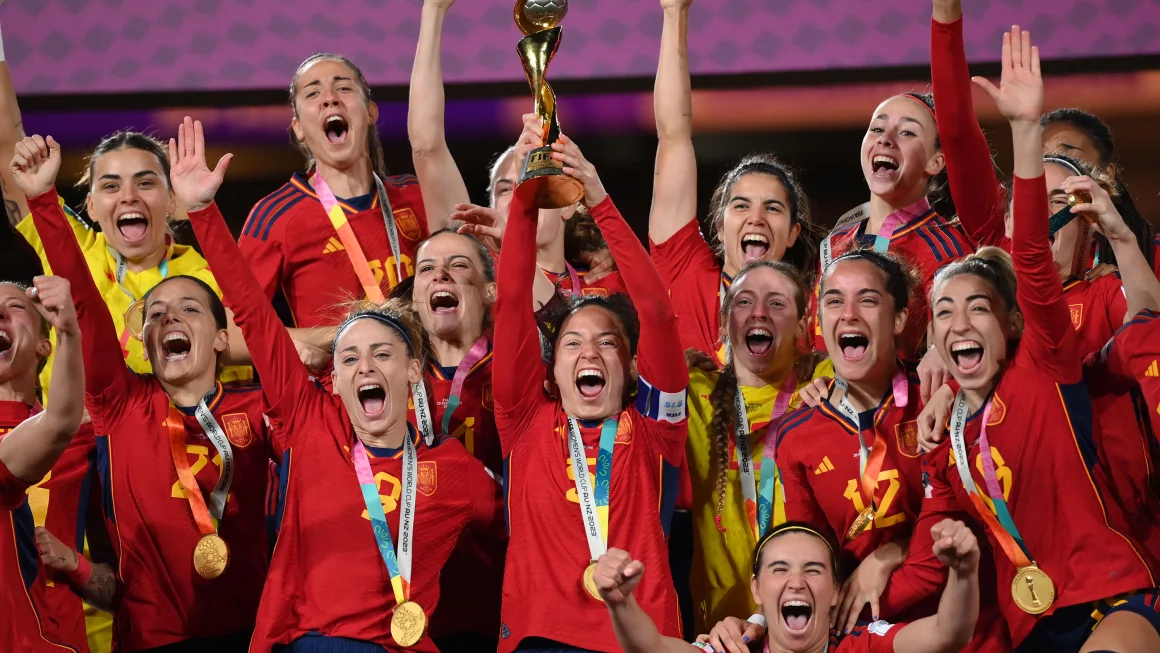A New Era Begins: Women’s World Cup Expands to 48 Teams for 2031 Tournament
FIFA has officially raised the bar for women’s football. In a landmark decision that signals the sport’s accelerating global growth, the FIFA Council has unanimously approved the expansion of the Women’s World Cup from 32 to 48 teams, beginning with the 2031 edition. The tournament is likely to be hosted by the United States, with the United Kingdom expected to follow for the 2035 cycle—indicating a major shift in both the scale and reach of the women’s game.
The expansion mirrors the structure of the men’s World Cup, which will debut its own 48-team format in 2026. For the women’s competition, this means an increase not just in participation but in opportunity. The number of matches will rise from 64 to 104, and the tournament will be extended by a week to accommodate the larger schedule. With 12 groups of four teams each, the new format sets the stage for greater inclusivity, competitiveness, and commercial impact than ever before.
More Than Numbers: A Structural Leap Forward
While the jump from 32 to 48 teams may appear to be a logistical change, its implications are far deeper. FIFA president Gianni Infantino emphasized that the expansion is “not just about having 16 more teams,” but rather a strategic move to accelerate the development of women’s football across the globe.
In his statement, Infantino highlighted the 2023 Women’s World Cup as a turning point. It was the first edition where teams from every continental confederation won at least one match, and five different confederations were represented in the knockout stages. These milestones illustrate that the global competitiveness of women’s football is real—and growing. The expanded tournament is designed to sustain that momentum.
What this means for emerging football nations is unprecedented access to the sport’s biggest stage. For countries where women’s football is still in its formative years, the prospect of qualifying for a World Cup offers a powerful incentive to invest in training, infrastructure, and grassroots programs. This is development through visibility—because when the world sees you, the world believes in you.
The U.S. Set to Lead the Charge in 2031
With the United States positioned as the likely host of the 2031 Women’s World Cup, the tournament could not be in more capable hands. The U.S. boasts one of the strongest and most established women’s football systems in the world, and its past success—both on the pitch and in organizing major international events—makes it a logical choice for shepherding this expanded format into existence.
Hosting the tournament will also give the U.S. a chance to amplify domestic support for women’s football at a critical time. As the National Women’s Soccer League (NWSL) gains traction, and youth participation continues to rise, a home World Cup could fuel a surge in fan engagement, media coverage, and corporate sponsorship.
Economic and Cultural Impact
The decision to expand the Women’s World Cup carries significant economic and cultural implications. With more matches, more host cities, and more teams traveling, training, and competing, the tournament’s footprint will be substantially larger. That means more jobs, more tourism, and more opportunities for local economies to benefit from the spotlight of global football.
Culturally, the move sends a clear message: women’s football is no longer a peripheral concern. It’s a central part of FIFA’s global strategy, and by giving more nations a stake in the game, the organization is helping normalize women’s sports as a powerful platform for visibility and unity.
Additionally, the increase in matches creates more media inventory—more broadcast hours, more sponsorship slots, and more opportunities for storytelling. Players from lesser-known footballing nations will finally get the chance to showcase their skills on a world stage, potentially shifting perceptions and narratives in the global sports media landscape.
Challenges and Expectations
Of course, the expansion will not be without its challenges. Organizing a 104-match tournament requires significant logistical coordination. Stadiums, training facilities, broadcasting infrastructure, and travel arrangements will need to scale up. Ensuring competitive balance will also be key, especially with more first-time entrants expected in 2031.
Critics may point out that expanding too quickly risks diluting the quality of play. But the 2023 tournament proved that so-called “minnows” are closing the gap with traditional powerhouses. In fact, part of the beauty of global tournaments lies in the unpredictability and emotional arc of underdog stories.
FIFA’s job now is to support new entrants with resources and expertise so that qualification doesn’t just become a symbolic gesture—but a meaningful opportunity to grow.
Looking Ahead to 2035
The expansion also sets a long-term precedent. With the United Kingdom likely to host the 2035 edition, back-to-back tournaments in football-strong nations could serve as a launchpad for continued global enthusiasm. These editions will not only determine champions—they will shape the trajectory of the women’s game for generations.
Both nations bring robust football ecosystems and strong fan bases, offering an ideal environment for record-setting attendance and global viewership. As hosts, they can also push for further equality in prize money, coverage, and institutional support—issues that continue to challenge parity in global sports.
A Moment Worth Celebrating
The decision to expand the Women’s World Cup isn’t just a headline—it’s a milestone. It reflects the growth, maturity, and potential of a sport that has long operated in the shadows of its male counterpart. With 48 teams set to compete in 2031, the women’s game takes a confident step toward parity, inclusion, and global relevance.
More countries. More athletes. More stories. More inspiration.
If the 2023 World Cup was a glimpse of what’s possible, then 2031 promises to be a defining moment not just for women’s football—but for sport, equity, and international unity as a whole.
